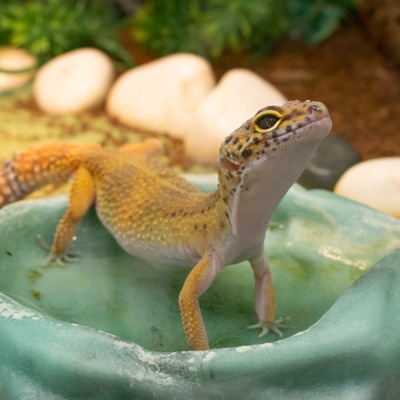
About Common Leopard Gecko
Habitat
The common leopard gecko can be found in dry and semi-dry regions, as well as arid grasslands. Leopard geckos are commonly found throughout southeast Afghanistan, Iran, and Iraq.
Diet
This species feeds on smaller creatures such as insects, scorpions, centipedes, and spiders.
Family Life
Leopard geckos are solitary. Females typically lay two eggs which are subject to temperature-dependent sex determination, meaning that their gender is determined by how warm the egg is during development. Females prefer damp, humid environments for laying and burying the eggs.
Conservation Status
The conservation status of the Common Leopard Gecko is classified as not evaluated.Threats
- Due to the geographic range of this gecko species, their population is not under any immediate threat.
- The common leopard gecko does have several predators in the wild including snakes, foxes, and other large reptiles. To avoid predators, the gecko will bury itself under sand allowing them to remain hidden until the danger passes.
Facts about Common Leopard Gecko
Class:
Reptilia (reptiles)Order:
Squamata (scaled reptiles)Family:
Gekkonidae (geckos)Genus:
Eublepharis (leopard geckos)Species:
Eublepharis macularius (common leopard gecko)Life Span:
Up to 20 yearsSize:
7 – 11 inches (18 – 28 cm)Weight:
0.1 – 0.15 pounds (50 – 70 g)
Fun Facts
- Unlike most lizards, common leopard geckos have eyelids that are translucent and movable, allowing them to blink and close their eyes while sleeping.
- No tail? No problem! If a common leopard gecko loses its tail after being attacked, another one will grow back in its place.
- Due to the common leopard gecko’s auditory anatomy, when viewed from the side, light shines through the gecko’s head.